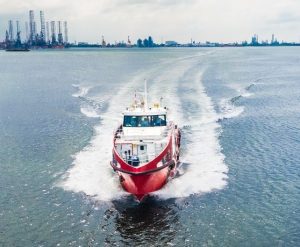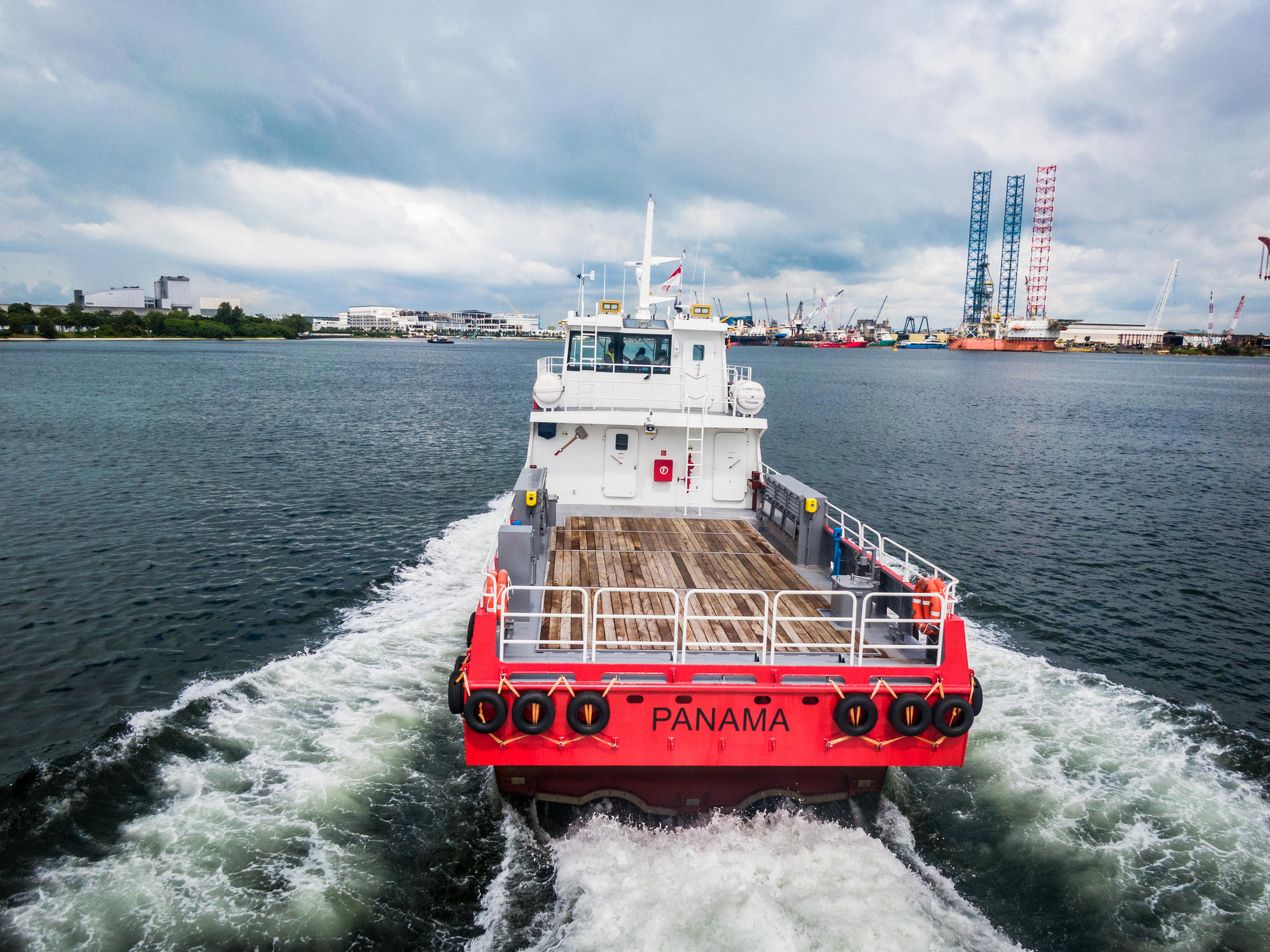 The bright red monohull crewboat slices through crystal clear waters in Singapore, its design elegant and sophisticated. Summit PSA 5 is 25 meters long, with a 16,000-liter tank capacity… and two fixed pitch propellers.
The bright red monohull crewboat slices through crystal clear waters in Singapore, its design elegant and sophisticated. Summit PSA 5 is 25 meters long, with a 16,000-liter tank capacity… and two fixed pitch propellers.
Anyone can recognize the grace with which the crewboat moves through the water, but it takes an industry expert to truly get a sense of the time, effort, and innovation it took to bring this project to fruition. It’s intoxicating to watch, and it all started with the design.
The Australian-based ship designer, Incat Crowther, has been operating in the United States for ten years. Incat Crowther is known for being on the cutting edge of boat design, with an eye towards efficiency and sustainability. This award-winning company continues to develop advanced concepts and implement state-of-the-art design methods. HydroComp, Inc. recently spoke with Project Manager Crayke Windsor of the Lafayette, Louisiana division. Crayke has been involved with Incat for the past eight years, giving him a front row seat to the evolution of ship design. According to Crayke, the industry has seen a spike of innovation over the past decade.
“It’s interesting,” says Crayke, “because the dirty little secret of the boat design is that for conventional hull forms, development has flatlined for about 200 years. What is driving innovation is the amount of power that can be installed in these vessels which necessitates re-thinking the optimal hull form for a specific application. What was a semi-displacement hull form 10 years ago may now be operating well into the planing regime by virtue of the available power that can be installed… Appreciating and understanding that difference is critical to a successful design.”
 As vessel design advances past the status-quo, the analytical requirements and engineering tasks become increasingly critical. As Crayke puts it: “With it all moving so quickly, once you find something that works, you stick with it.”
As vessel design advances past the status-quo, the analytical requirements and engineering tasks become increasingly critical. As Crayke puts it: “With it all moving so quickly, once you find something that works, you stick with it.”
It then makes sense that throughout this dynamic and ever-evolving era, Incat Crowther has been a long-time NavCad user. HydroComp continues to be at the forefront of advancing technologies, yet still serves as an anchor for clients. Despite the overwhelming pace of technological progress, HydroComp’s flagship product, NavCad, initially released in 1984, has stood the test of time in providing critical, reliable, and time-efficient results.
Crayke recalls the first time Incat Crowther utilized NavCad for a project: “It was a 50m vessel we did for a customer in the Philippines. We used NavCad to tease out the resistance. The program worked well; the project was a success and the customer was satisfied. Since then, we have continued to use NavCad with consistent results.” He continues: “Another time we were designing two boats for clients in South Africa. The design process of the first boat employed NavCad, while the second was designed without the software. Guess which one made speed?”

Throughout this period of new innovative solutions for vessel design, NavCad’s proven methodologies have continued to provide a reliable foundation for resistance and powering predictions. Incat Crowther has achieved its success based on the incorporation of forward-thinking tools and confidence in their designs. Through its class-leading performance and expertise, Incat Crowther’s marine design and engineering consistently deliver quality products.
Speaking of which, do you remember the Summit PSA 5? The crewboat from the beginning? Crayke commented on its performance: “It did ½ to ¾ of a knot faster after correlation based on NavCad’s prediction. She made speed, plus some.”
Read the full interview with Ship Designer Incat Crowther…
Download the full article, here.
